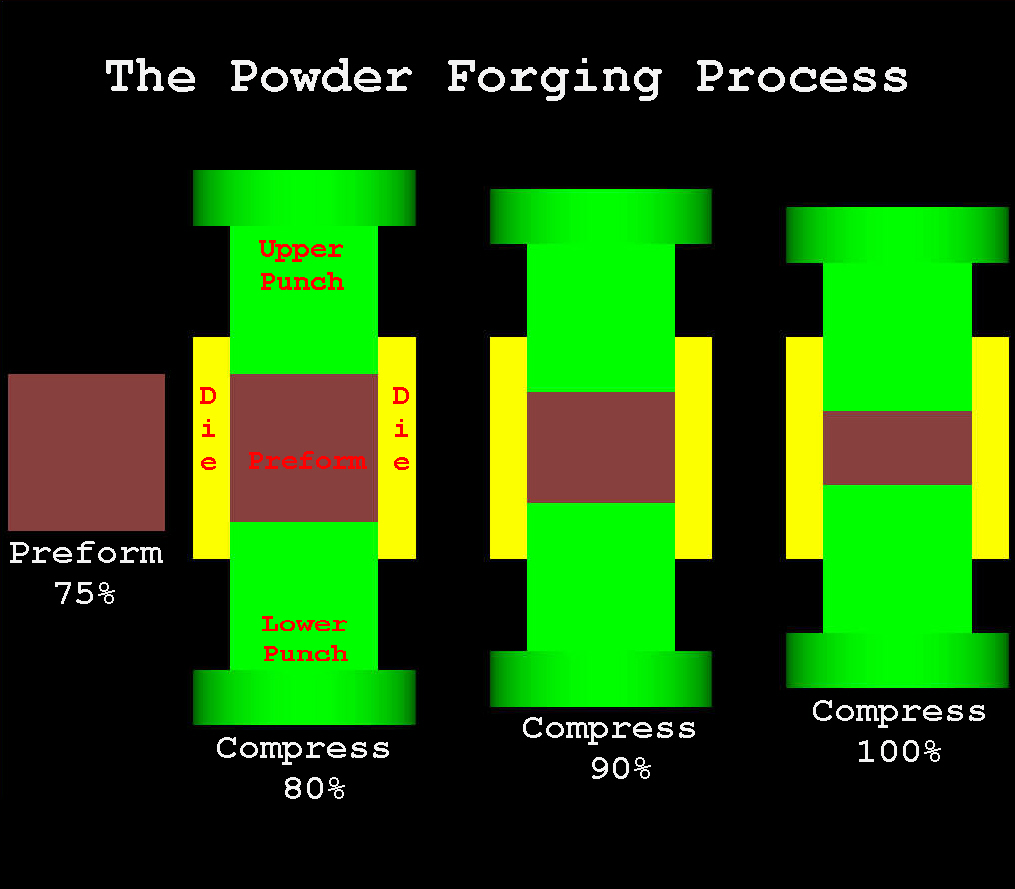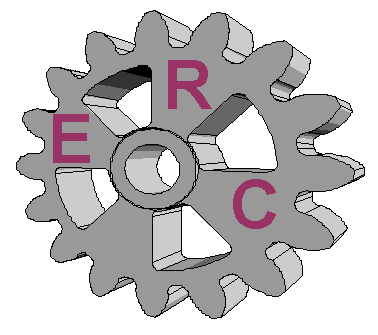
ERC Home

ERC Home
Isostatic pressing, increases density but is also used to make parts that have more complex shapes. During Isostatic pressing, the powder is contained in flexible molds made to the shape of the part. Cores in the powder can be used to form internal shapes. Multi-directional pressure is exerted onto the mold, either with a liquid in cold Isostatic pressing systems, or with a heated gas such as argon in hot Isostatic pressing. Densification to what is practically full density is achievable with most materials Equipment is available to process parts up to about 50 inches in diameter and 12 feet long.
Hot Isostatic pressing is often used with superalloys for the gas turbine engine industry. It is also very effective with tool steels for high-speed cutters. The process may see increasing use for making parts from composites because composites are difficult to machine without breaking fibers and damaging the part.
The ability to produce near-net shaped components eliminates the need for subsequent machining operations.

Forging is a manufacturing process by which metal is plastically deformed under great pressure into high-strength parts known as forgings. The green compact called a preform is sintered and then restruck or forged to the final density.

Metal Injection Molding officers a manufacturing capability for producing complex parts. The process uses fine metal powders mixed with various thermoplastics, waxes etc. Typical powder size will be in the range of 20 micrometers or less. Final relative densities are generally 95-98 percent with interconnected porosity less than 1 percent.
The steps involved in forming a component by MIM include the following:
Rapid solidification technology (RST) is a new technology, which can cool molten metals and alloys faster than conventional metallurgical techniques, perhaps as high as 109 degree/sec. Therefore, the resulting solid could have either amorphous or very fine grain microstructures. Many of the advanced properties of rapidly solidified materials are attributed to the very fine microstructures, including mechanical, chemical, electrical, and magnetic properties; and improved corrosion resistance.
Return to the main article ERC Home
ERC Home